In Rouen, the Aître Saint-Maclou is an unusual place that deserves a visit ! Nestled in the heart of the city, this former 15th-century ossuary attracts visitors not only for its mysterious atmosphere, but also for its cultural program and living spaces.
Far from being stuck in the past, the aître Saint-Maclou is a vibrant, living place where history, crafts and joie de vivre meet in surprising harmony. Its restaurant, tours, workshops and shows all help to breathe new life into this unusual site.
In this article, we delve into the fascinating history of an ancient cemetery that has lived many lives and discover how it continues to resonate in the present, captivating all who pass through its gates.
Article produced in collaboration with Rouen Normandie Sites & Monuments
Summary
The history of the Aître Saint-Maclou
The creation of the aître in a period of high mortality
Let’s go back in time we are in the 14th century, a time when death rubs shoulders with the living. The Black Death epidemic wreaked havoc, decimating at least a third of the population, a misfortune compounded by periods of famine.
To cope with the growing number of deceased, the parish of Saint-Maclou in Rouen had to expand its cemetery this was the birth of the grand aître.
Why don’t we talk about a cemetery ? That’s the question!
At the time of the creation of the Aître Saint-Maclou, the term “cemetery” was part of the learned language of the ecclesiastics.
Instead, the local population spoke of an “aître”, a word derived from the Latin atrium , which refers to the inner courtyard of a house. By extension, the term has been used to refer to the courtyard of a church, which often houses a cemetery.
Time passed, but the 15thth and 16thth centuries were no kinder to the population of Rouen, affected by new waves of epidemics, and the aître found itself saturated. The parish then built an ossuary, three ” U ” galleries where the bones of the formerly dead were stored in the attics, exposed for all to see, in order to free up space for the newly deceased.
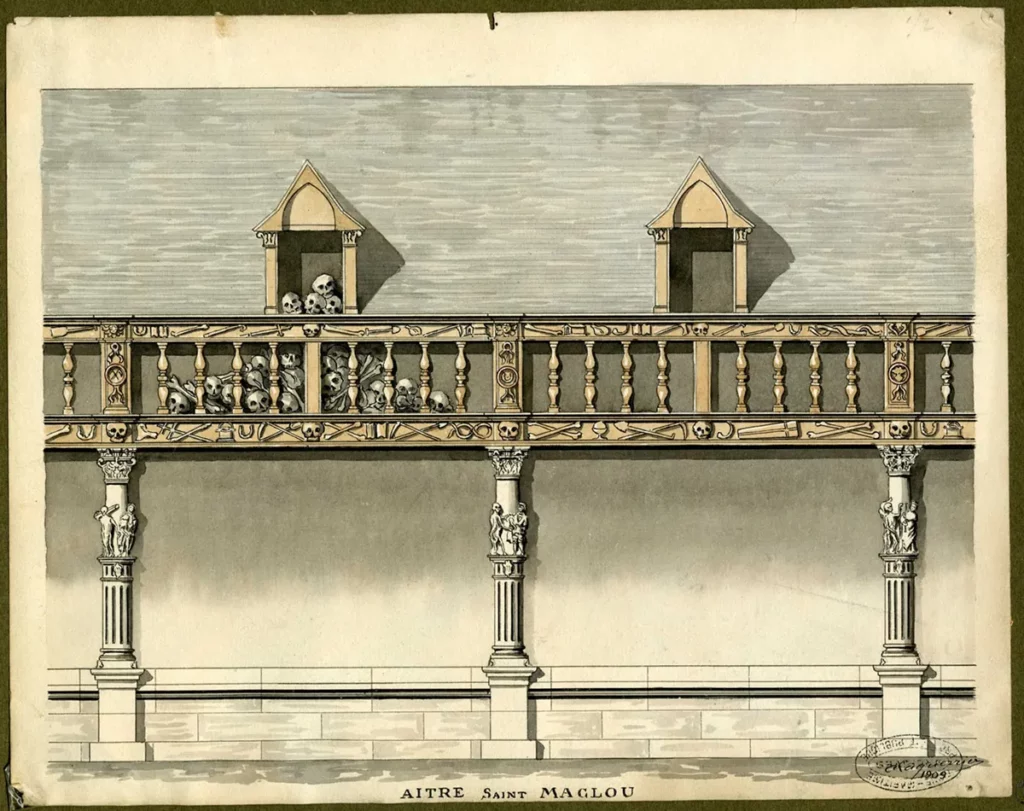
The rich décor of the Saint-Maclou Aître
These galleries were not built in haste, in fact they bear rich decoration that make the Saint-Maclou Aître one of the most beautiful in Europe. The galleries feature sculpted stone columns depicting a danse macabre.
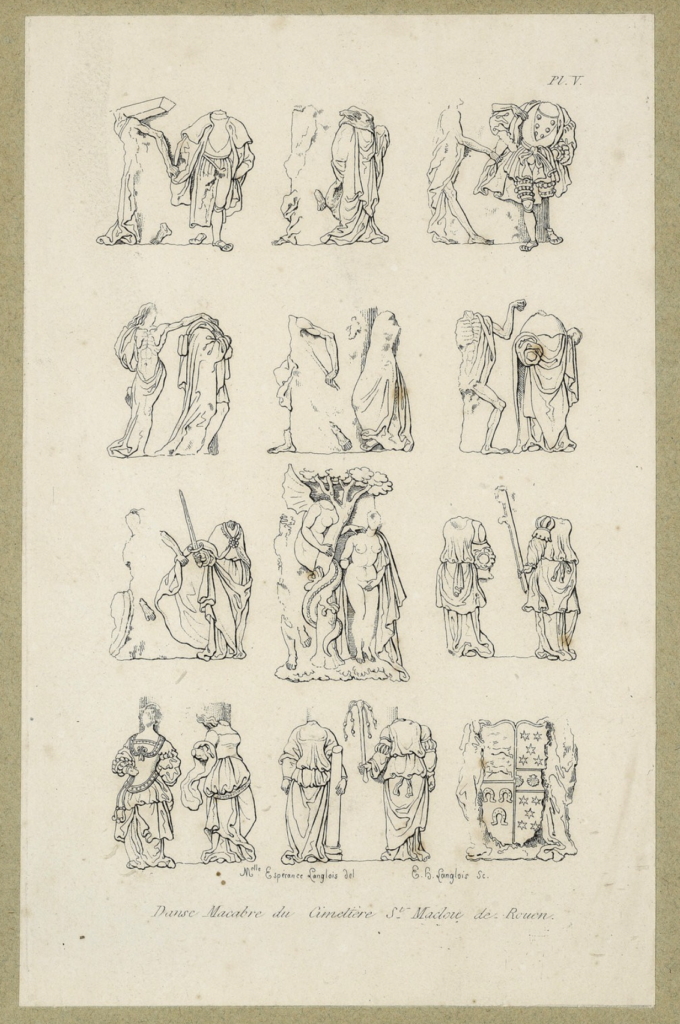
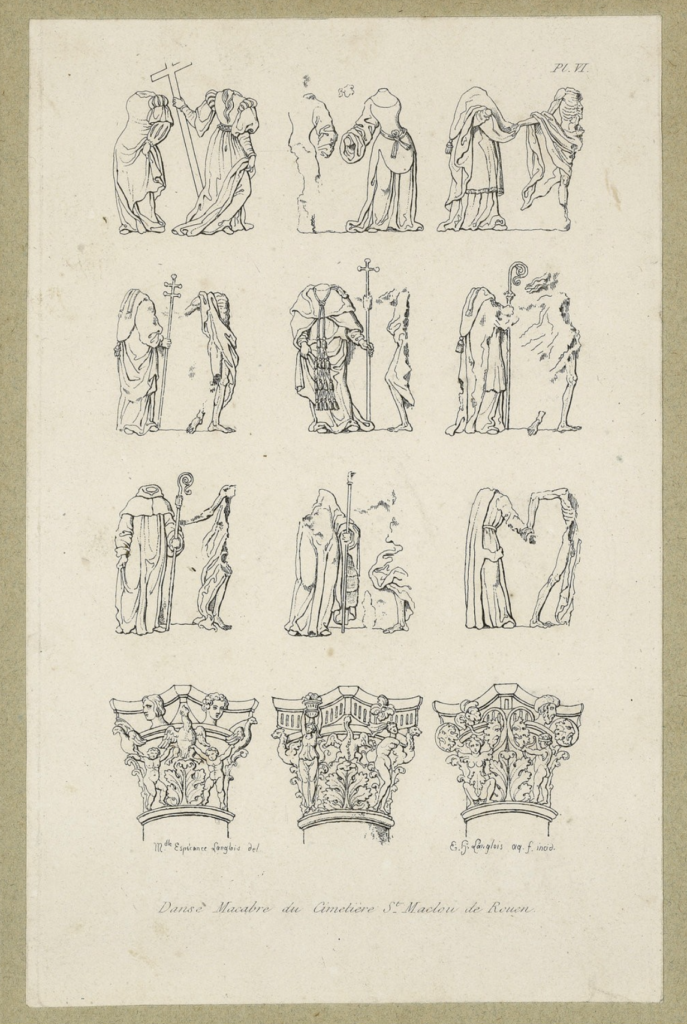
What is a danse macabre?
It was in the Middle Ages, with the high mortality rate, that dances of death appeared in art, in all its forms : painting, sculpture, literature… This dance depicts a procession in which death represented in the form of a skeleton accompanies living people from all social classes.
This death that grabs the living to take them along in a dance sends back a message is simple : everyone is going to die, and no one can escape ! While this depiction may seem morbid and overwhelming today, in medieval society it was an invitation to prepare for God’s judgement in order to gain access to a happier eternal life.
Don’t miss: the Danse macabre will be at the heart of the programme for the 4th edition of the Fêtes macabres, from 19 October to 3 November 2024
The danse macabre in the Saint-Maclou Aître depicts members of the clergy on the west side and laypeople on the east side. The north gallery features sibyls and virtues symbolising hope, as they herald the resurrection of Christ.
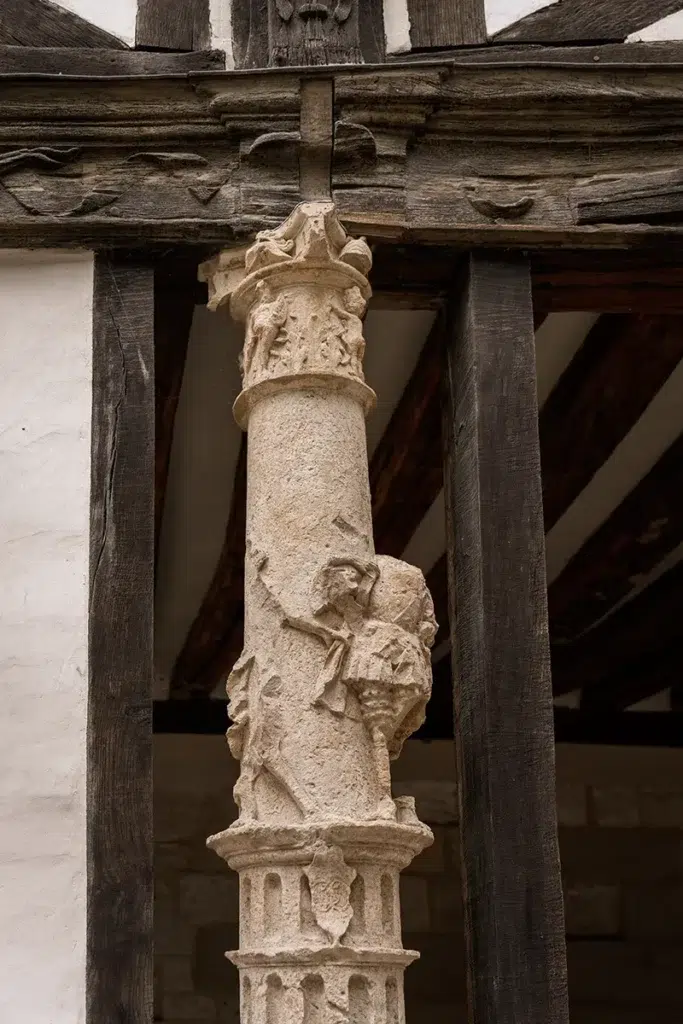
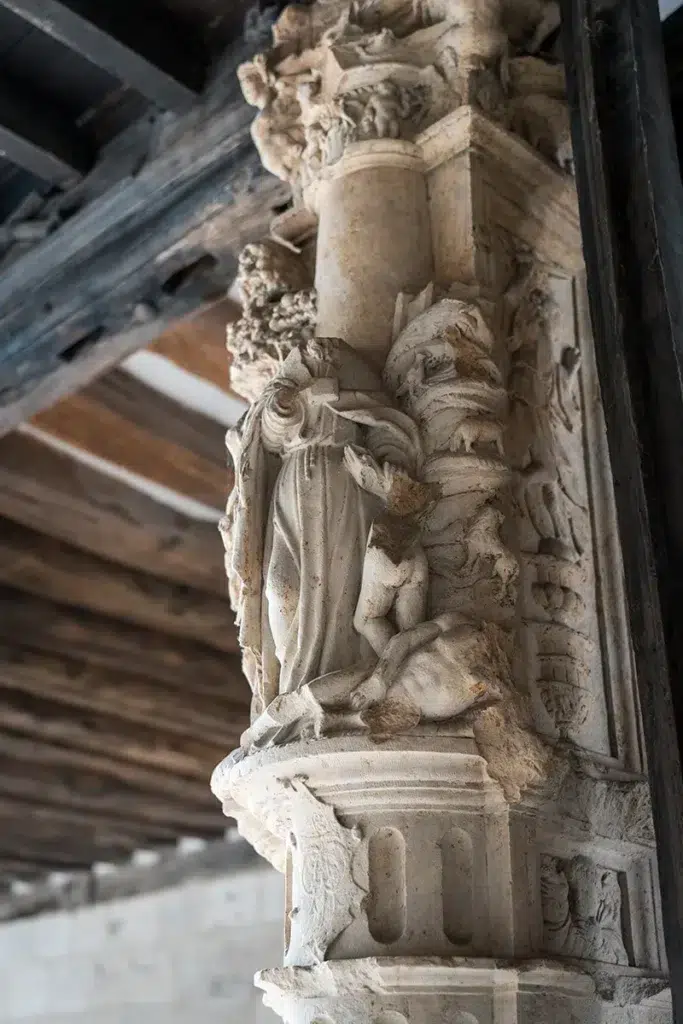
The columns support wooden beams, also richly carved with macabre motifs representing bones, liturgical objects and objects used by the gravedigger (coffin, shovel…).
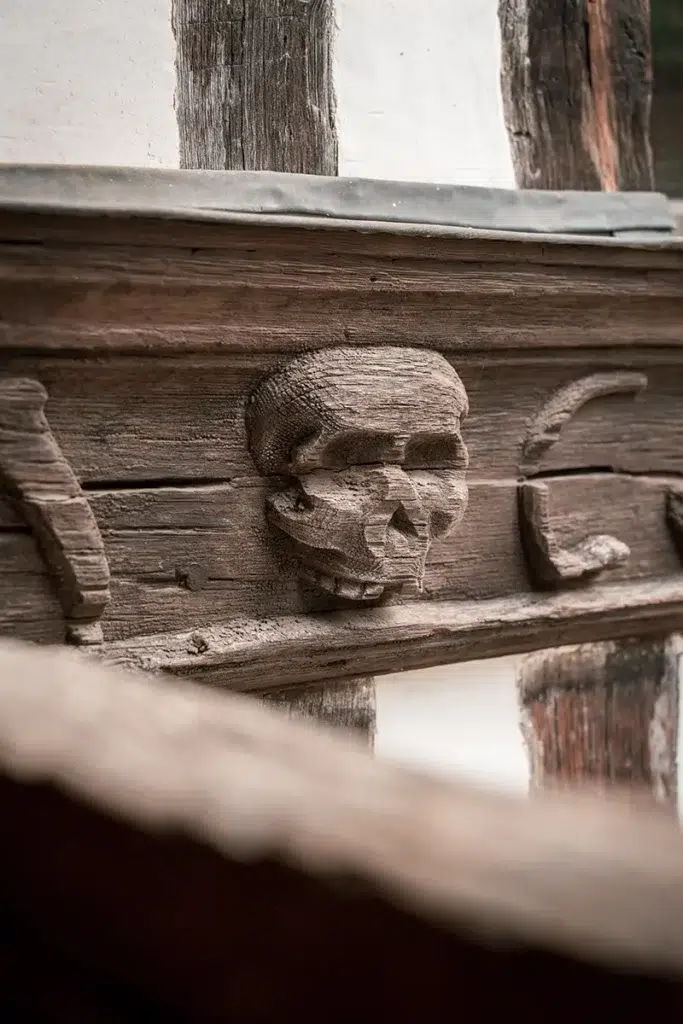
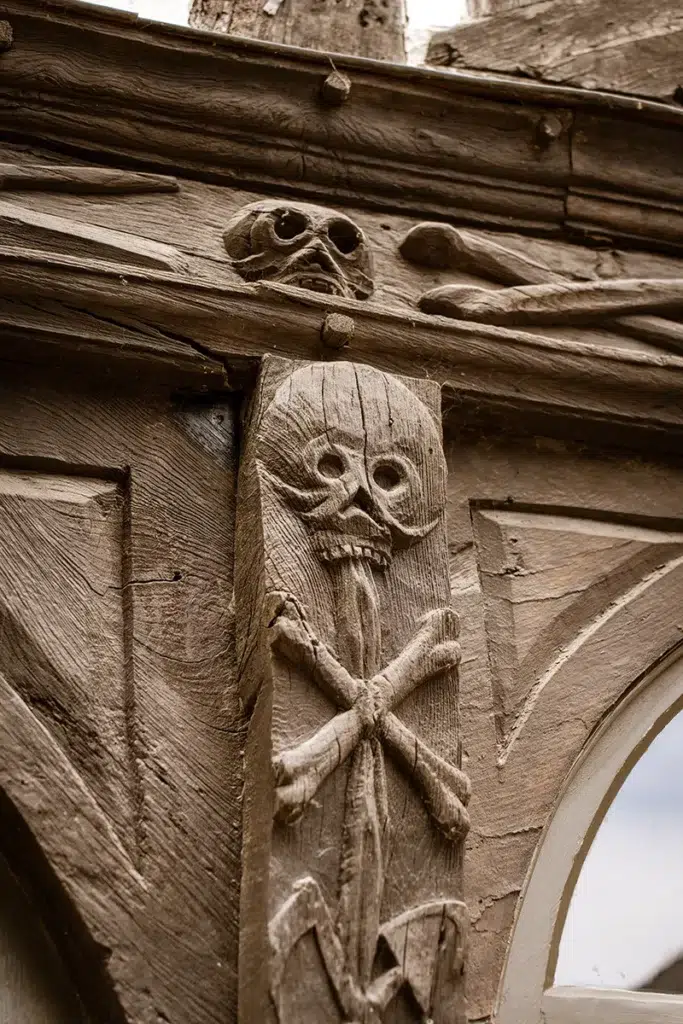
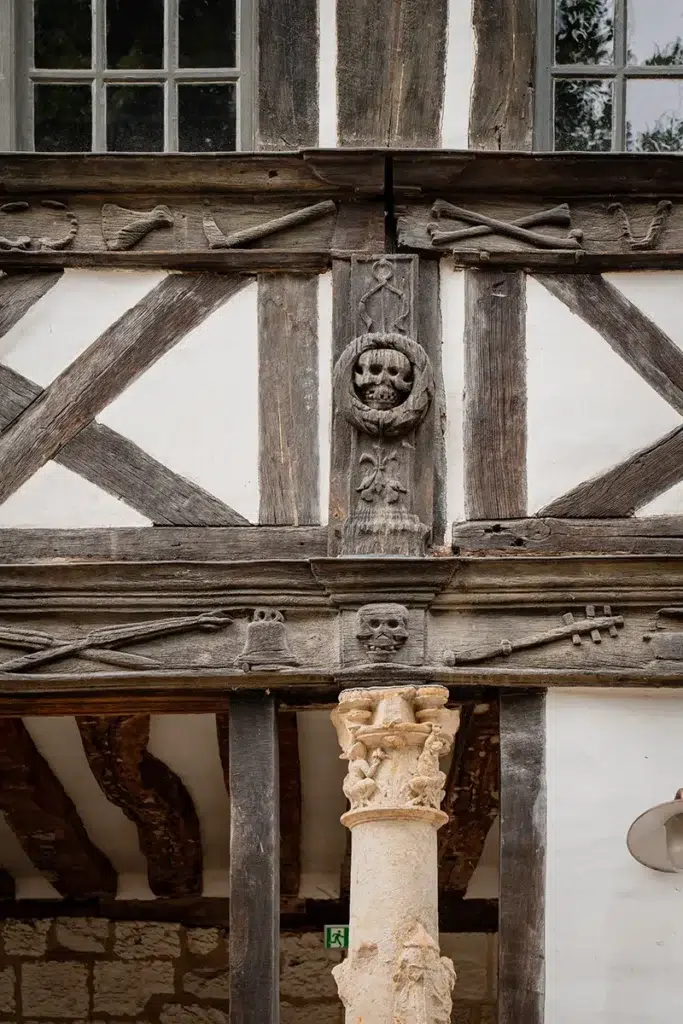
Discover the history of the Aître Saint-Maclou with an audio tour
Learn about the history of the Saint-Maclou Aître with a colourful audio tour! For 30 minutes, the gravedigger of this ancient cemetery, accompanied by a cat, will introduce you to the thousand lives of this place in a tasty and funny exchange.
Audioguides can be collected from the reception desk at the aître for €5 per person. A children’s trail (7-12 years) including mini-games is also available for €3.

The second life of the aître Saint-Maclou : a school in the heart of the cemetery
In the mid-17thcentury, the courtyard of the aître was closed off with the construction of a fourth wing to the south. This contributed to the funerary activity of the site, but also housed accommodation for teachers, as in 1661 the parish set up a school for poor boys, which was supplemented in 1680 by a school for girls. Here, the school coexisted with the life of the aître : classes were held in the galleries and recreation took place in the central courtyard where burials took place.
At the height of the school’s activity, 1,200 pupils attended the aître, making it necessary to build classrooms. To this end, the first three galleries were raised between 1745 and 1766, while preserving the Renaissance décor. At the end of the 18e century, the cemetery ceased to operate: burials now took place outside the town, but the school continued to operate until the beginning of the 20e century.

During the Second World War, Rouen’s art school was destroyed, so in 1940 it was decided to temporarily house the students in the aître, which was no longer in use. This “temporary” period lasted 74 years, since it wasn’t until 2014 that the school moved to new premises.
The cat at the Saint-Maclou Abbey, a legacy of the students at the Ecole des Beaux-Arts?
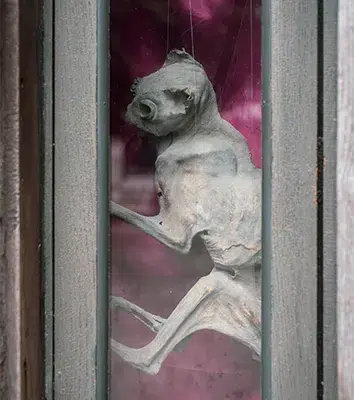
The most famous figure in the Aître is undoubtedly the mummified cat that can be seen in a wall in the South Gallery. But where did this cat come from? To this day, the mystery remains was it walled up alive when the abbey was built ? In the Middle Ages, it was common practice to imprison black cats, which were associated with the devil, to ward off bad luck.
Another hypothesis suggests a link with the Ecole des Beaux-Arts. A former teacher brought it into his office and when he retired, the students incorporated it into the wall as a hoax…
The rebirth of the Saint-Maclou Aître
A vast restoration campaign
Following the departure of the Ecole des Beaux-Arts, a restoration campaign was launched in 2016. To mark the occasion, archaeological excavations were carried out, uncovering numerous burials of men, women and children, both in the courtyard and in the galleries.
The study of the bodies has enabled us to gain a better understanding of the burial practices of the Middle Ages, and has revealed the pathologies from which the inhabitants suffered: syphilis, tuberculosis and the Plague, since a fragment of DNA close to the bacteria responsible for this epidemic has confirmed the presence of plague victims in the aître.

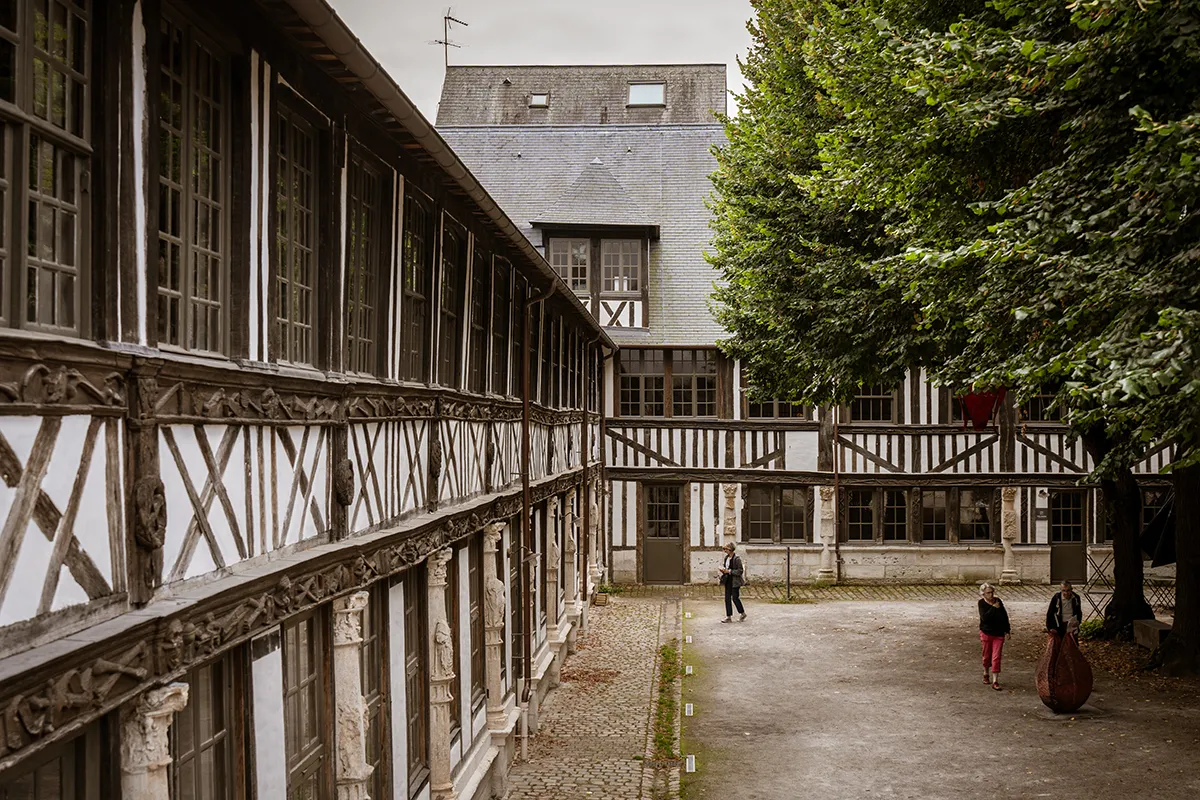
The Saint-Maclou Ayster today : a place of life
From the outset, the Aître Saint-Maclou has been a lively place, despite its macabre character. As well as schoolchildren, the galleries were frequented by quidams who traded there or simply wandered around.
Today, the monastery is once again open to the public, who can move freely in the courtyard and the east gallery. It’s a place of passage that, despite its history, has nothing sinister about it. Many passers-by come here, linger in the courtyard for lunch or take in a show, as a wide-ranging cultural programme brings the aître to life throughout the year. Concerts, guided tours, exhibitions, workshops… there are plenty of activities on offer.
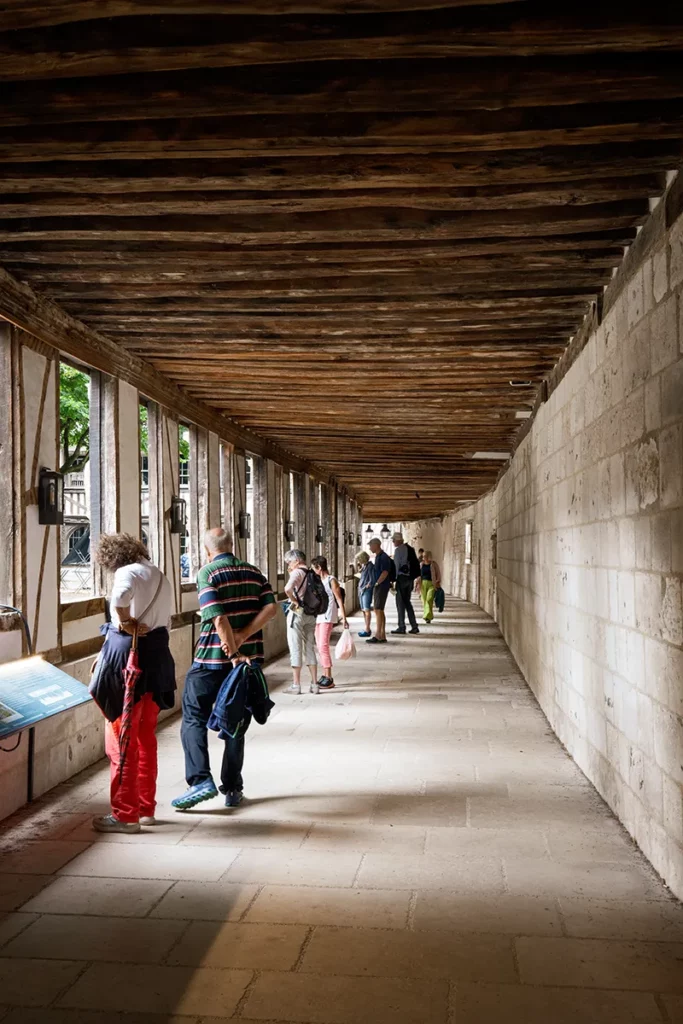
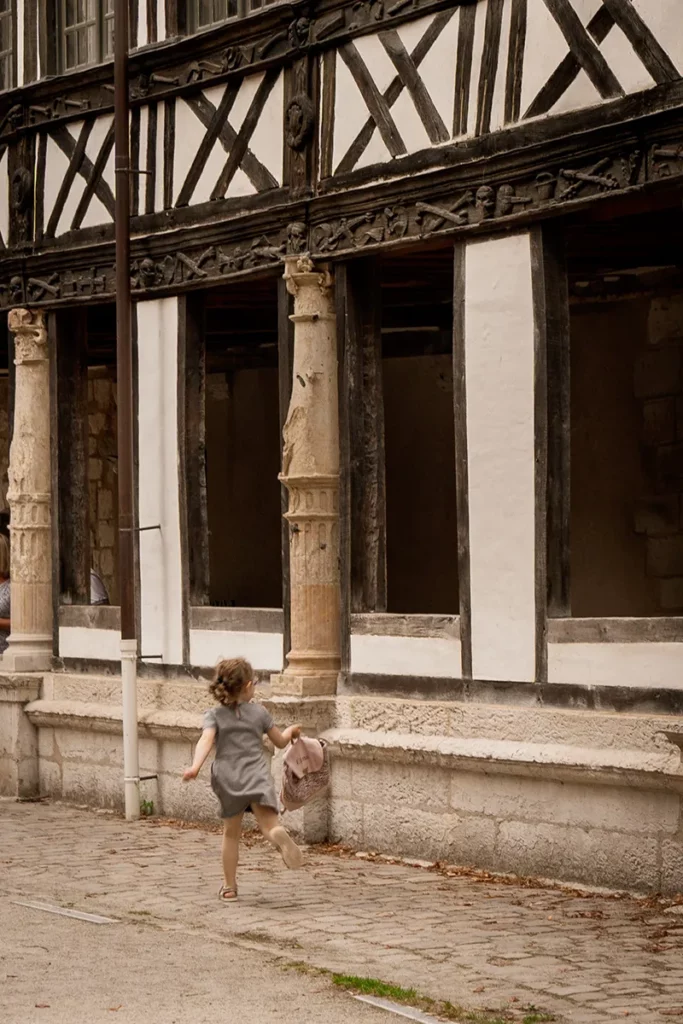
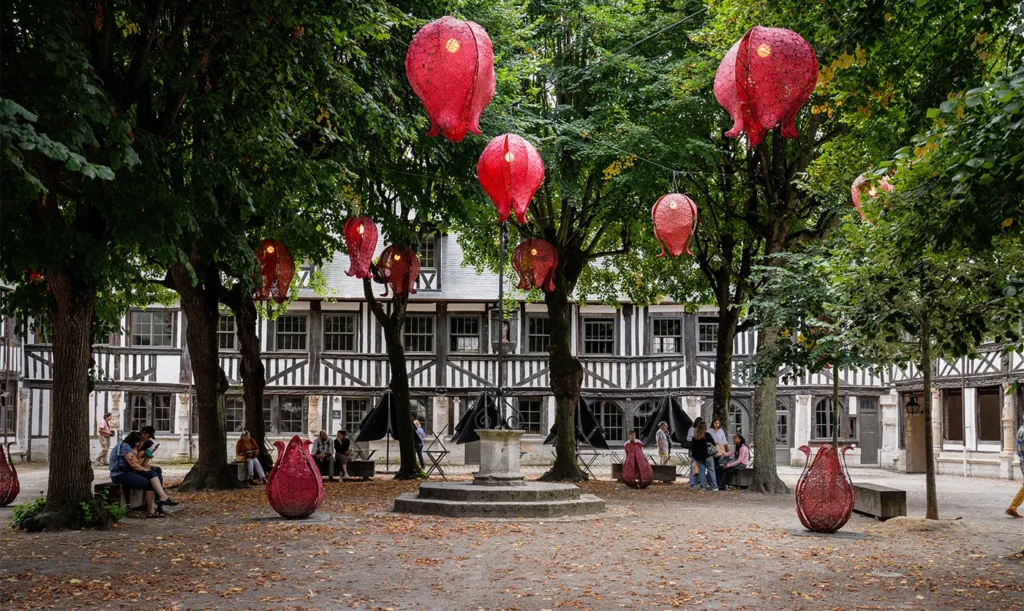
You will also find, in the South and East galleries :
- A restaurant, the café Hamlet open Tuesday to Sunday
- The Galerie des Arts du Feu which promotes arts and crafts
Other monuments and cultural sites to see in Rouen
Take advantage of being in Rouen to explore other must-see places :
The Historial Jeanne d’Arc
Joan of Arc is undoubtedly Rouen’s most famous figure, as it was in this city that she died at the stake on 30 May 1431. L’historial Jeanne d’Arc takes you back to the 15the century to discover the true story of ” la Pucelle d’Orléans “.
The Rouen Dungeon
It’s impossible to miss this tower, which you’ll see very quickly as you leave Rouen station. A Rouen landmark, it is the last vestige of a castle that stood here in the 13th century. Today you can visit it and even play an escape game.
The Maison Sublime
Located beneath the Palais de Justice, the Maison Sublime is the oldest Jewish monument in France. This monument, discovered only 40 years ago, can only be explored on a guided tour.
The Château de Robert le diable
On the outskirts of Rouen, the château de Robert le diable dominates the Seine. It’s a fortress full of legends that appeals to young and old alike thanks to its exploration games.
Practical information
Address:
Aître Saint-Maclou
186 rue Martainville
76000 Rouen
Hours:
Free admission every day from 9 a.m. to 7 p.m.
Website:
www.aitresaintmaclou.fr
Prices:
Free admission
Only guided or audio-guided tours are chargeable
Find out more
Article produced in commercial collaboration with Rouen Normandie Sites & Monuments
Many thanks to Anne for her warm welcome and to Laëtitia for her fascinating explanations.
Unless otherwise stated, the photographs illustrating this article are the property of Culturez-vous and may not be used without written permission.

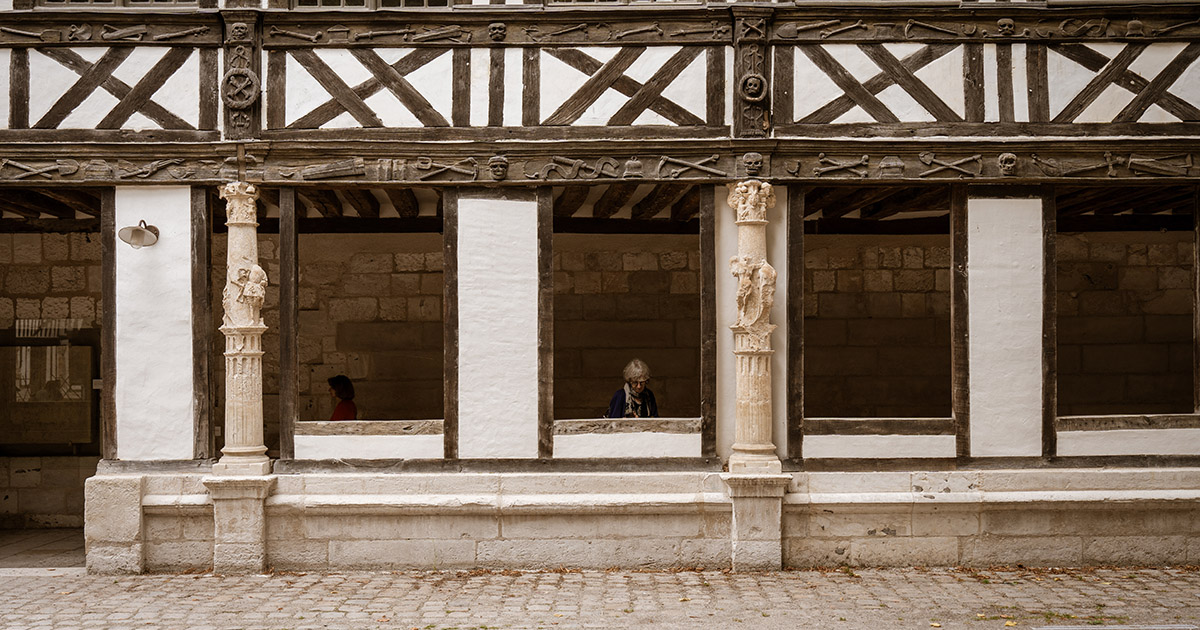



No Comments
Leave a comment Cancel